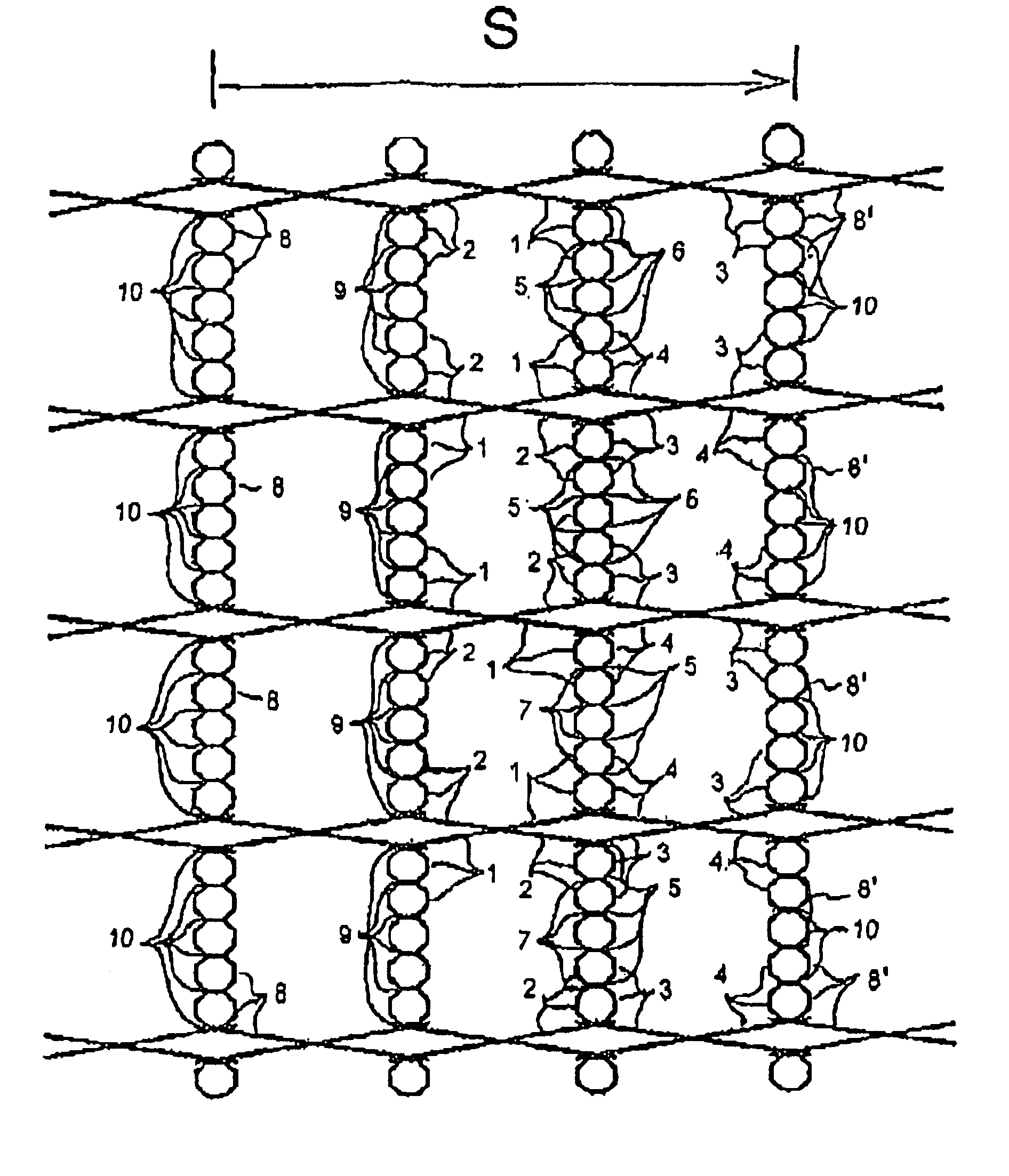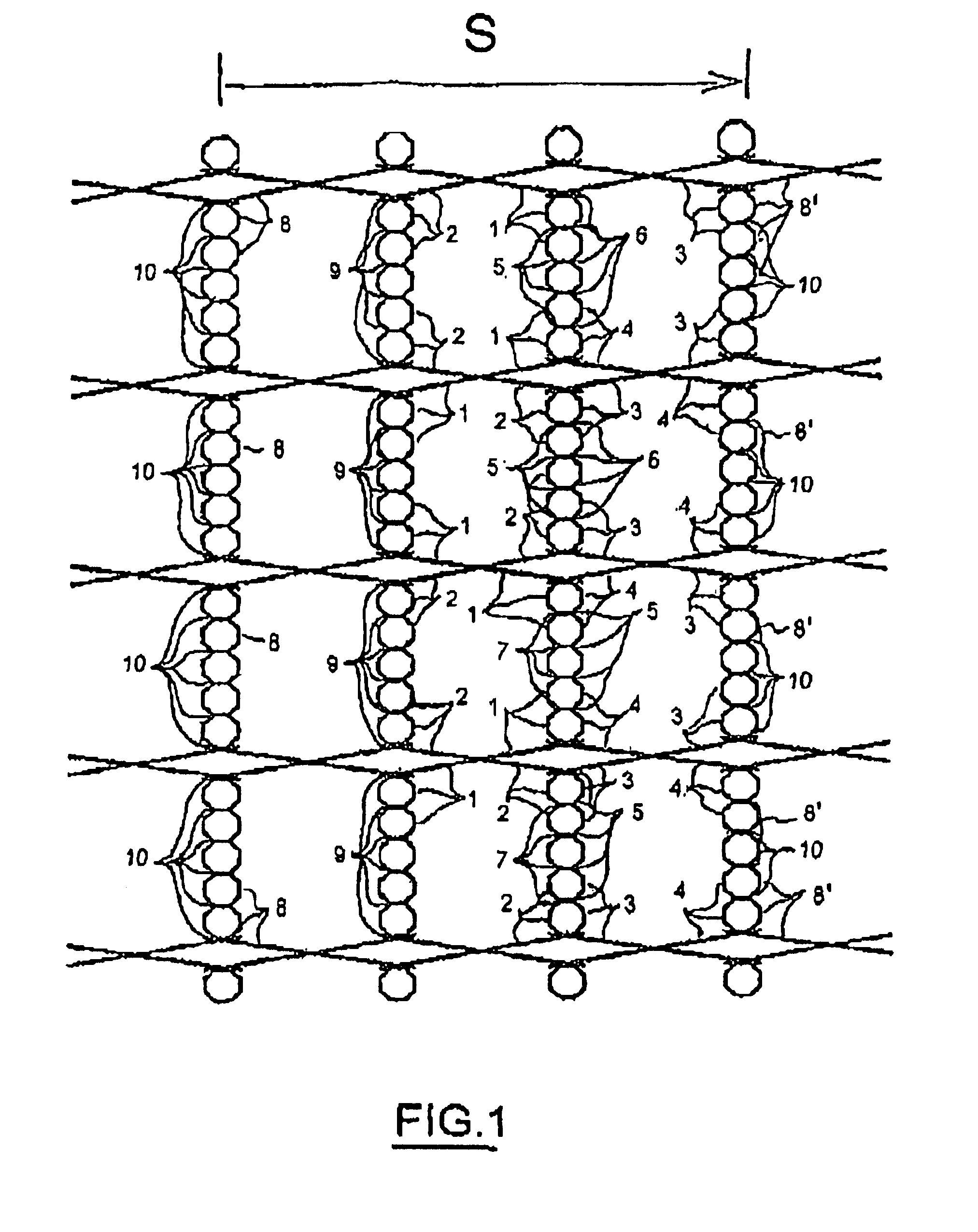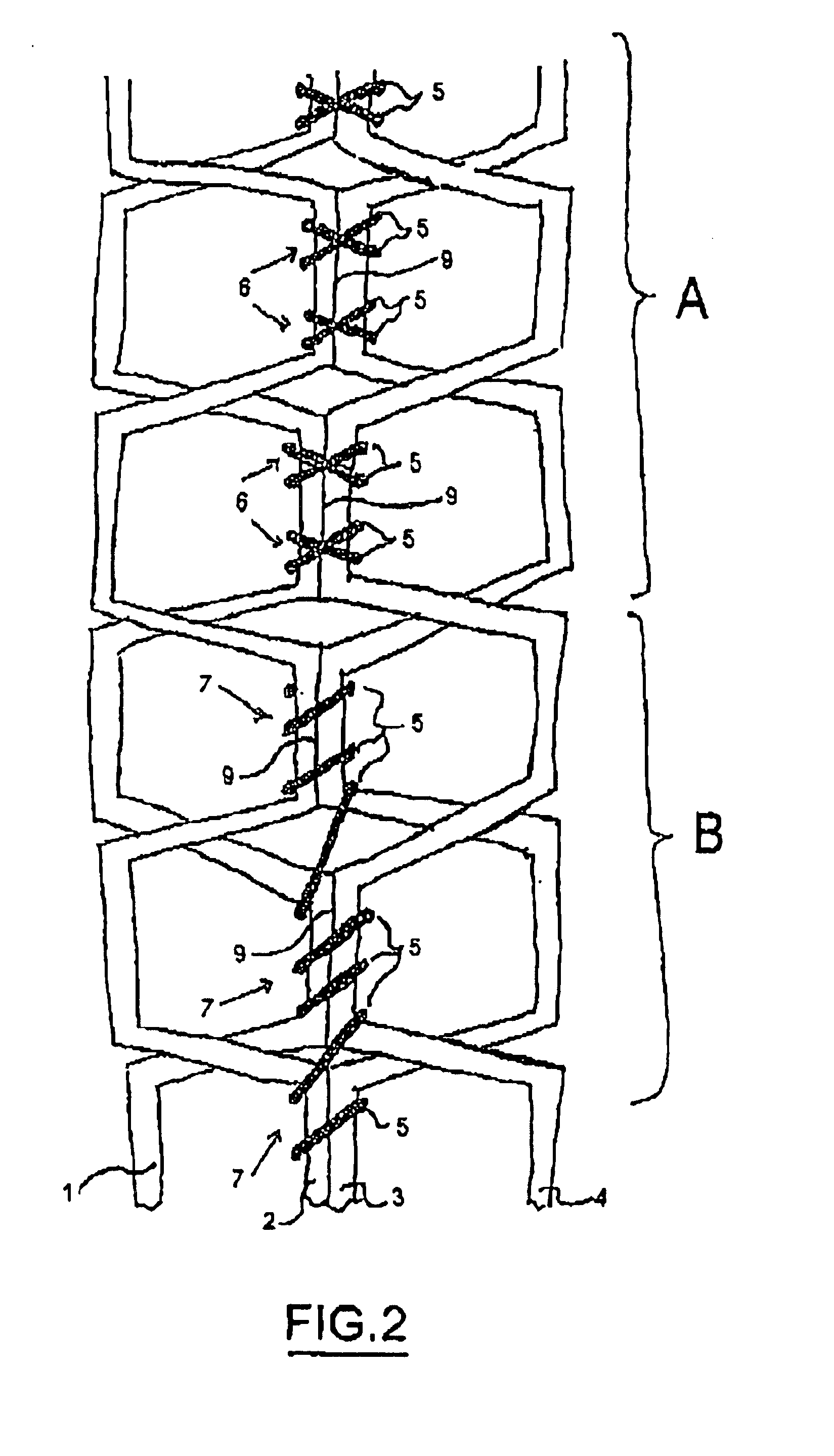Textile heating device
a heating device and a technology of a textile, applied in the direction of fluid heaters, heating types, lighting and heating apparatus, etc., can solve the problems of often inadequate requirements, achieve effective and economical contact of heating strands, reduce the distance to be electrically bridged between two electrode strands, and reduce the resistance
- Summary
- Abstract
- Description
- Claims
- Application Information
AI Technical Summary
Benefits of technology
Problems solved by technology
Method used
Image
Examples
Embodiment Construction
[0022]FIG. 1 shows, in enlarged representation, a portion of a heating textile according to the invention, present in the form of a knit fabric. The knit consists basically of three different types of strands or filaments. Reference numerals 1 to 4 and 8 and 8′ designate strands serving as conductors of electric current. Specifically, they are heating strands 1 to 4 and electrode strands 8, 8′ of the knit. On the other hand, reference numeral 5 designates a connecting filament, making a fixed connection of the points of contact 9, 10 of the electrically conductive strands 1 to 4, 8, 8′. The arrow designated by the letter S indicates the direction of the flow of current through the heating textile when a correspondingly directed voltage is applied to the electrode strands 8, 8′.
[0023]For the electrical junction of a heating textile, use is made of electrodes, commonly bonded, sewn, riveted or otherwise attached to the textile conductively by means familiar to those skilled in the art...
PUM
 Login to View More
Login to View More Abstract
Description
Claims
Application Information
 Login to View More
Login to View More - Generate Ideas
- Intellectual Property
- Life Sciences
- Materials
- Tech Scout
- Unparalleled Data Quality
- Higher Quality Content
- 60% Fewer Hallucinations
Browse by: Latest US Patents, China's latest patents, Technical Efficacy Thesaurus, Application Domain, Technology Topic, Popular Technical Reports.
© 2025 PatSnap. All rights reserved.Legal|Privacy policy|Modern Slavery Act Transparency Statement|Sitemap|About US| Contact US: help@patsnap.com



